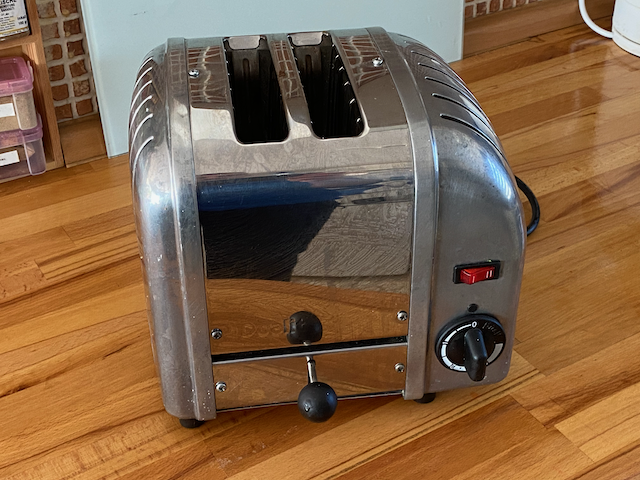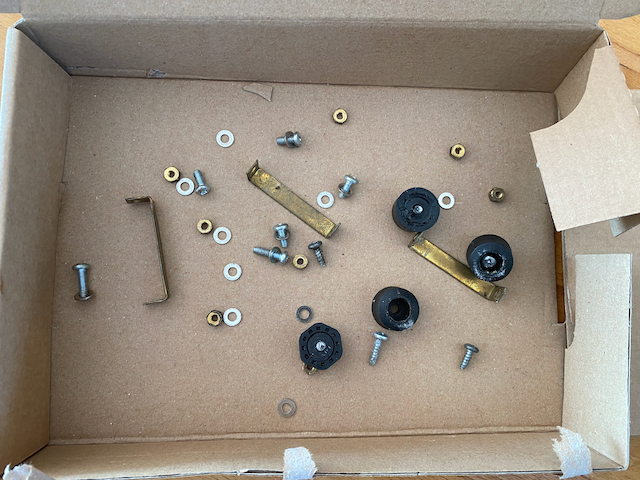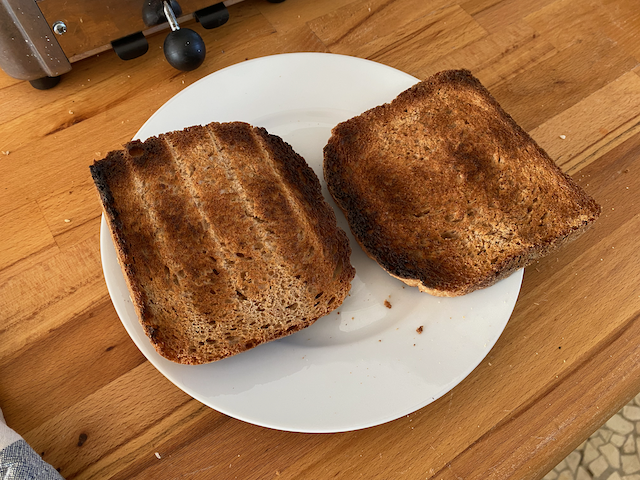In Praise of My Toaster

This is my toaster.
It’s the oldest gadget I own.
It’s got a retro style all of it’s own, so it’s immune to the currents and trends of fashion.
Over the years it’s developed a patina of scratches and dents that only add to the aesthetic. Every dent a story, like the ding in the top where I dropped my favourite mug and saw it explode into fragments.
And while it was several times the price of something made of plastic, it’s been amortised over 20 years and has probably worked out cheaper in the long run.

Last week I had to replace the element, which was a half-hour job involving a screwdriver and a pair of pliers. Now it’s good for another 20 years.
In the process of replacing the broken part, I realised that in many ways, this might be the perfect gadget.

As a toaster, it works exceptionally well.
It gives feedback: The timer is clockwork, and the operation is simple. Turn further for darker toast. Once you’ve decided on your perfect level of toasting, that’s embedded in memory as an angle of the wrist. You don’t even need to look at the numbers - optimal setting is completely haptic.
It doesn’t need monitoring: The buzzing of the clockwork provides an audible signal that it’s running. As the timer runs down towards the end, the sound subtly changes. The end of the cycle is announced with a solid clunk as a finale, if the olafactory feedback provided by the smell wasn’t enough.
It’s easy to intervene: The lever that flips the toast up out of the slots is independent of the timer, so you can check the degree of browning without interrupting operations. That’s also a failsafe - if you’ve miscalculated the timings, you can just bash down on the knob and the slices will be ejected out before burning too badly. Bash enthusiastically enough and time it right, and you can catch them on a plate

As an example of a gadget, it’s also exceptional.
It’s simple: Aside from the element it’s completely mechanical. There’s no electronics to fail silently, or software to be buggy.Electrical problems can be diagnosed with simple tools. It doesn’t take anything more sophisticated than a screwdriver to disassemble. The way it comes apart and goes back together again is completely obvious.
It’s fixable: It’s non-obsolescent. Components like the element and the clockwork mechanism will eventually fail because they’re under stress - but they are readily-replaceable because the manufacturer has committed to maintaining enough inventory. At a push, it would be possible to create ersatz parts myself - rewinding an element with nichrome wire or 3D-printing a plastic part.

There are some things it can’t do. It can’t send me push notifications when the toast is ready, for example. But in some ways this is actually a net positive. If this toaster was online, it would be a countdown to obsolescence. The functionality would rely on some kind of backend web service that would last as long as the provider stayed interested. It would be at constant risk of enshittification through upsells, or my details being leaked and payments hijacked.
Do I actually need a push notification from my toaster. Can’t I rely on the audible cues of the clockwork timer, and the olfactory feedback of the toast browning? If I really wanted the connectivity, I could plug it into a current-sensing socket, and fire a message when the element stopped drawing power.
That would have the advantage of decoupling the problems - the toaster continues to do what the toaster is meant to do, and nothing more. I could switch the digital parts at will to mitigate the obsolescence and enshittification, and introduce new functionality as it develops. Rather than throwing the toaster away because it’s not metaverse-compatible, augment it with the components needed to bridge the gap between the physical and virtual worlds.

There’s a temptation to take the analogue approach to extremes, and slip into a kind of neo-luddite mindset that rejects any kind of connectivity, or to assume enshittification is the ultimate fate of any service. But there are some situations where it’s very hard to see why there could be digital benefits, and the creation of two slices of nicely-browned toast has to be one of them.